Dalmatia
History
Until Roman expansion in the early years of A.D. (Anno Domini), on the eastern coast of the Adriatic sea lived Illyrian tribe called the Dalmatae. Romans successfully conquered Illyrian lands of Dalmatia and Panonia as well as most of the Europe (map). Dalmatia had just become yet another Roman province for many centuries, or until collapse of Roman Empire.
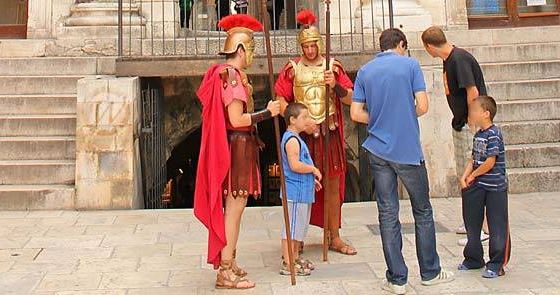
Since then many rulers claimed Dalmatia, Byzantine empire right after Romans, Croats settled at that same time and ruled from there with its Kingdom, just to be followed by expansion of Hungarian crown and then Venetian Republic. Even under Napoleon rule Dalmatia had been for few years just to be replaced by Austrian crown and that lasted until 1918. Of course, twentieth century was not any different.
Rulers (and dreamers) were changing but Croats endured and modern-day Dalmatia is in the Republic of Croatia, Central-Europe (discover). Dalmatia stretches from island of Rab and the southern part of Velebit mountain range, on the northwest coastline, to the most southeastern part of Croatia, Prevlaka, overlooking the Bay of Kotor.
More inland, behind all the coastal marinas, ports, towns, cities and their beaches is the hinterland called Dalmatian Zagora, place of unique natural beauty (also featured on our photographs and videos).
Dalmatian Zagora photo gallery:
Also in Dalmatian Zagora, Knin fortress photo gallery…
How to get there?
For some, entry point to Croatia may be international airport in Zagreb, well-connected with most of European cities. In your case you may want to skip the continental part of the country and choose one of direct flights to the coastal airports in Pula or Rijeka, in Istria and Kvarner, or airports in Dalmatia – Split, Zadar and Dubrovnik.
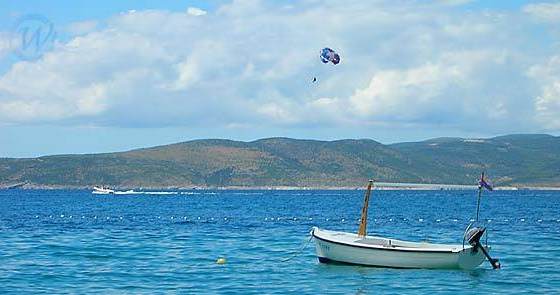
Speed limit on Croatian highways is 130km/h (80mi).
Another option preferred by millions of European tourists, since Croatia is centrally located in the Europe, is to drive by car to the Adriatic coast, while others choose a bus or train. Croatia is crisscrossed by net of modern highways, in part featured on our video.
Cities like port city of Split have ferry connection to many of Adriatic islands, as well as to city of Ancona in Italy, on the west coast of the Adriatic sea.
Intro to Dalmatia photo gallery:
After landing in Zagreb (video) we do spend week or two in and around the city rediscovering its old and discovering its new, while in the same time enjoying delicious continental dishes or Mediterranean specialties available in the restaurants, or found in the local fresh food markets. At the same time we are also exploring surrounding towns, like Samobor (travel notes), and Zagroje region (photos) before we get on the road for the coast.
Dalmatia and Islands
Largest cities on the Dalmatian coast are Split (photos), Zadar, Šibenik and Dubrovnik (photos). All of them are marvelous historic jewels just as countless smaller towns, to mention few, Nin, Biograd na moru, Pakostane, Pirovac, Skradin, Trogir, Omis, Brela, Baska Voda, Makarska, Ploce, Cavtat, etc.
Numerous islands are scattered along the coast, most of them not inhabited, with Kornati islands – one of the Croatian national parks, are every sailors dream come true. Island of Pag, via bridge connected to the mainland with its Moon like landscape may just surprise you with its world over know cheese. Other Islands, including Rab, Brac, Hvar, Korcula, Vis and peninsula Peljesac also offer spectacular gift created by Sun, scarce earth covered with white stone and generations of hands who created some of the greatest grape-varieties on Earth.
On the road
As already mentioned, 380 km of highway cutting through extraordinary nature (watch video; Split – Zagreb, 2005 highway drive) brings us just under four hours to Split and since our destination was Brela on Makarska riviera we added extra 1/2 hour to our trip.
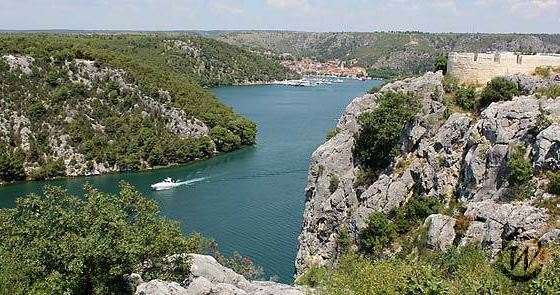
Dobro došli or Welcome!
Right there, in between crystal clear sea and Biokovo mountain is seated beautiful Makarska riviera (video). Town Makarska is the biggest on Riviera among tens of smaller tourist places that are very popular among European tourists. Some other larger towns on riviera are Baska Voda, Brela – photos and video, Podgora, Tucepi, Zivogosce, etc.
Almost every town has its own marina, many hotels and private accommodations, villas for rent, many restaurants, which will serve you with well-known sea food specialties as well as with regional cuisine like Dalmatian prosciutto and delicious local cheeses served with great local wines (also, try some of the south-European specialties like burek that you can buy in local bakeries – maybe for breakfast, and for lunch ćevapčići – close relative to Kebab).
Some of the islands are just a stone trow away from the coast, with many local tour operators offering a day trip to explore Islands of Brac, Hvar and others (photos). On some of the boats grilled fish is prepared and served for lunch with local wine and just before the meal drink called rakija (rakiya) – snaps or grappa (fragrant grape brandy with around 40% of alcohol).
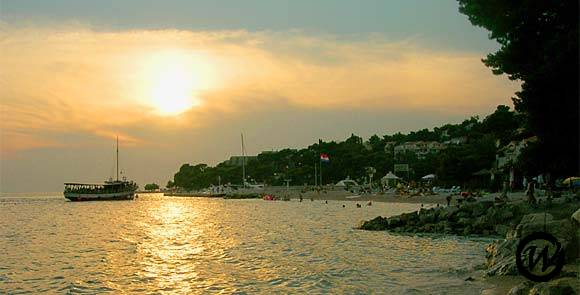
Brela travel notes, photos and video…
By staying on mainland or one of the Islands you’ll most likely find relaxing atmosphere and enjoy your stay on the beach, but there is plenty of opportunities to explore and be active. If climbing Mount Biokovo would be to much of an effort then you may be for some white water rafting on the Cetina river, rent-a-boat, jet-ski, go boat paragliding, etc. If you wake up to a cloudy day and northern wind called Bura then you should definitely visit some of the neighboring towns, try new local dish maybe, or visit a museum. If ancient Romans could conquer it all 2000 years ago then visit to Split shouldn’t be that hard from Makarska riviera in our case. It’s well worth it to park your car in Split, on the Riva, and walk the streets of once fortified retirement palace build by Roman emperor Diocletian, few kilometers from, then Roman settlement of Solona.
More on Croatia in travel notes, on photos and video…
Just outside of Split you can travel in to Middle Ages by visiting fortification of Klis. No matter where you choose to spend you vacation in Dalmatia or on the Adriatic islands, every city or town could be pleasant surprise, so do not be afraid to pick a guide [+] or ask locals where to go and explore.
Never enough…
Once we have reached Makarska Riviera how could we resist and not to continue all the way to Dubrovnik, on the same Magistrala road with even more spectacular view (also featured on our Dubrovnik video) passing through river Neretva delta and its many fruit plantations that produce oranges, nectarines and watermelons among other fruits.
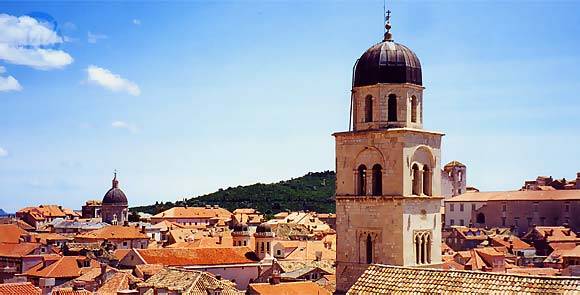
Dubrovnik (photos) has been called many times Mediterranean jewel and there are thousands of years of history that will confirm this statement. Cultural events are held on open air throughout the summer months. We were impressed as many before us with the beauty and hospitality of the city and it’s citizens.
Since 19th century Istria, Dalmatian coast and the Adriatic Islands have been one of the favorite destinations for European tourists, and today are visited by millions of tourists every year including those from Germany, Austria, Italy, Czech Republic, France, Poland, Slovenia, Hungary, Switzerland, Sweden, Holland & others.
If you decide to see more than Croatia and take some of many Mediterranean cruises you’ll most likely stop for a day visit in Dubrovnik, or Island of Korcula, maybe Split experience some other pleasant surprises as a first time visitor.
Hope you’ll enjoy it as much we did, and if you wonder what’s cooking in the Croatian kitchen…
All the regions of Croatia will introduce you to a blend of Central-European and Mediterranean culture, cuisine and hospitality.
Discover Croatia…




























There are extremely beautiful places along Mediterranean and one of them is definitely Dalmatia, Istra and Croatian Islands of Adriatic.
Thanks!